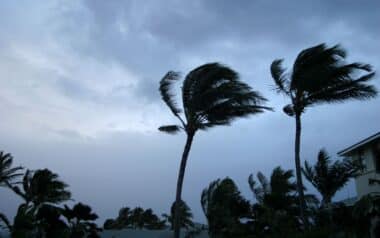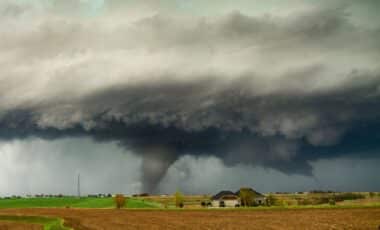California is experiencing its first major heat wave of the summer as a powerful high-pressure ridge, also known as a heat dome, builds across the western United States. Forecasts show that this event will lead to soaring temperatures across the Southwest, with inland areas in California bracing for triple-digit heat through the week.
Following a cooler-than-average June and a mild Fourth of July, this new system marks a return to more typical summer weather patterns. The National Weather Service warns that the positioning of this ridge will determine the duration and severity of extreme temperatures, particularly across interior regions of the Golden State.
Inland Regions Face The Most Extreme Heat
The Central Valley and inland Southern California are expected to experience the highest temperatures during the event, with areas such as Redding, Fresno, Bakersfield, and Riverside forecasted to reach highs between 105°F and 110°F from Wednesday through Friday. These conditions mark a significant shift from earlier mild weather and pose health and fire risks to affected populations.
In the Mojave Desert and high desert areas, temperatures may climb even higher. Heat models indicate that Thursday and Friday will see the peak of the event, as the ridge strengthens directly over Southern California. Public health agencies have issued heat advisories, urging residents in these areas to limit outdoor exposure and stay hydrated.

Marine Layer Moderates Coastal California
While inland regions are forecast to swelter, coastal California, particularly the Bay Area, is expected to avoid the worst of the heat. The clockwise wind pattern around the ridge is maintaining a southwest flow, preserving the marine layer that typically cools coastal areas.
Cities such as San Francisco, the Peninsula, and the Santa Cruz Mountains will likely see temperatures in the 80s to low 90s Fahrenheit, significantly cooler than surrounding inland zones. This weather pattern illustrates how topography and proximity to the ocean continue to buffer these regions from more severe inland conditions.
Heat Wave Spreads Across The Western United States
Beyond California, the high-pressure system is also driving extreme heat across the interior West, including Phoenix, Las Vegas, and parts of Oregon, Washington, and Idaho. These areas are expected to experience highs nearing 110°F, particularly in southern Nevada and central Arizona.
The Great Basin is also under heat advisories as temperatures surge. The National Weather Service has indicated that heat-related health risks will increase significantly during midweek, urging states to prepare cooling shelters and emergency measures to support vulnerable populations.

Madre Fire Complicates Emergency Response
In Southern California, the ongoing Madre Fire adds urgency to the situation. The wildfire, currently burning in the Los Padres National Forest and Carrizo Plain, has consumed approximately 80,000 acres, making it the largest wildfire of the year so far in the state.
Although the blaze remains mostly confined to remote terrain, it surpasses the size of the January 2025 wildfires in Los Angeles, which burned a combined 45,000 acres and destroyed nearly 20,000 structures, resulting in multiple fatalities. Emergency crews are monitoring the risk of fire expansion as hot, dry conditions persist.
Potential Relief Expected by The Weekend
Most weather models suggest that the high-pressure ridge will begin to weaken and shift eastward by the weekend, bringing a gradual cooldown. Northern California and coastal zones are likely to see improved conditions first, though inland valleys may remain under elevated temperatures for longer.
Although there is no widespread offshore wind associated with this heat event, the combination of very high temperatures and low humidity could increase wildfire threats, especially in interior and foothill regions. Fire authorities continue to monitor conditions closely as the state faces another challenging summer weather pattern.










